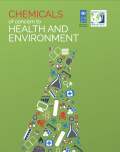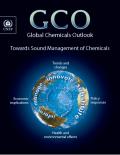
This document includes a list of chemicals of concern to human health and the environment. The list is based on systematic evidence reviews from authoritative sources, which identify chemical and material hazards of concern that are carcinogenic, mutagenic, endocrine disrupting and reproductive hazards (health hazards) and bio- accumulative and persistent to the environment and/or listed in International Environmental instruments (Conventions).
This edition of the Group of Experts on the Scientific Aspects of Marine Environmental Protection (GESAMP) Hazard Evaluation Procedure provides an updated set of criteria for evaluating the hazards of chemicals (substances and mixtures) that may enter the marine environment through operational discharge, accidental spillage, or loss overboard from ships. Hazards to both human health and the marine environment are considered and the information is collated in the form of a “hazard profile”, a comprehensive but easily readable fingerprint of the hazard characteristics of each substance.

The Technical Background Report to the Global Mercury Assessment 2018 was produced by an international team of experts convened through a collaboration between UN Environment and the Arctic Monitoring and Assessment Programme (AMAP). World Health Organization experts contributed to sections dealing with mercury exposure in humans.
This assessment was aimed to provide United Nations regulators, international, regional, national and local decision-makers with predictive knowledge and a management tool on contaminants trends worldwide to support decisions of socio-economic value at all scales. This report contains a detailed description of the established methodology, an overall description of the database, six case studies among the Large Marine Ecosystems (LMEs; selected based on geographic distribution and information availability), a global assessment, conclusions, and recommendations.

The "Global Chemicals Outlook: Towards Sound Management of Chemicals" report covers trends and indicators for chemical production, transport, use and disposal, and associated health and environmental impacts; economic implications of these trends, including costs of inaction and benefits of action; and instruments and approaches for sound management of chemicals.
